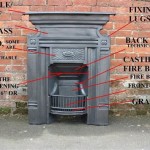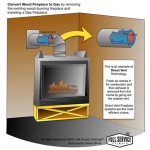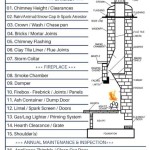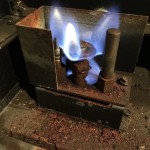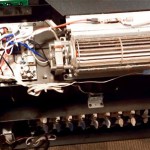Fireplaces That Heat the Whole House
Fireplaces have long been a source of warmth and ambiance in homes. While traditional fireplaces often provide localized heat, advancements in fireplace technology now allow for systems that can effectively heat an entire house. This article explores the various types of fireplaces that can heat the whole house, outlining their benefits and considerations.
Types of Fireplaces for Whole-House Heating
Several types of fireplaces are designed to distribute heat throughout a home. They are classified by their heat output and the method of heat distribution:
1. Direct Vent Fireplaces
Direct vent fireplaces utilize a double-walled vent system that draws in fresh air for combustion and expels exhaust directly outside. This system allows for efficient heat transfer, with less energy loss than traditional open hearth fireplaces. The heat is typically distributed through a series of vents connected to the fireplace, allowing warm air to circulate throughout the rooms. Direct vent fireplaces can effectively heat a single room or multiple rooms, depending on the size and layout of the house.
2. Gas Inserts
Gas inserts are designed to be installed within an existing fireplace opening. They offer a sleek and efficient way to upgrade an existing fireplace, turning it into a powerful heating source. Gas inserts operate on natural gas or propane and feature a blower system that circulates warm air throughout the house. They often have higher heat output than traditional fireplaces, making them suitable for larger homes.
3. Zero-Clearance Fireplaces
Zero-clearance fireplaces are a popular choice for new construction or renovations. These fireplaces are designed with a special firebox and venting system that allows them to be installed close to combustible walls. This feature makes them ideal for tight spaces and can help maximize the available living area. They often utilize gas or electric fuel sources and feature a built-in blower system to distribute heat effectively.
4. High-Efficiency Wood-Burning Fireplaces
While wood-burning fireplaces are typically known for their localized heat, modern high-efficiency wood-burning fireplaces with catalytic converters and efficient venting systems can provide significant heat output. These fireplaces are designed to burn wood more efficiently and generate less smoke and emissions. However, they do require regular maintenance and wood sourcing.
Benefits of Fireplaces for Whole-House Heating
Utilizing a fireplace for heating offers numerous advantages:
1. Cost-Effective Heating
Fireplaces can be a cost-effective way to heat a home, especially when using wood as a fuel source. The cost of wood can be considerably less than the cost of heating oil or natural gas, depending on the location and availability.
2. Energy Efficiency
Modern fireplaces, particularly those utilizing gas or electric fuel sources, are highly efficient and can significantly reduce reliance on traditional heating systems. This can translate into lower energy bills and a reduced carbon footprint.
3. Improved Comfort
Fireplaces provide a cozy and inviting atmosphere, creating a comfortable living space. The warmth and visual appeal of a fireplace can enhance the overall ambiance of a home, making it a desirable feature for both residents and guests.
Considerations for Choosing a Fireplace
When choosing a fireplace for whole-house heating, several factors should be considered:
1. Home Size and Layout
The size and layout of the home will determine the required heat output and the most suitable fireplace type. Consider the number of rooms, floorplan, and insulation levels to ensure the fireplace can effectively heat the desired areas.
2. Fuel Type
The available fuel sources and cost considerations should be factored into the decision. Gas, electric, and wood-burning fireplaces each have advantages and disadvantages, including cost, efficiency, and environmental impact.
3. Installation Costs
Installation costs can vary depending on the chosen fireplace type, the complexity of the installation, and any required modifications to existing structures. It is important to factor in the total installation cost when making a decision.
4. Maintenance Requirements
Different fireplace types have varying maintenance requirements. Gas fireplaces generally require minimal maintenance, while wood-burning fireplaces require regular cleaning and ash removal.
By carefully considering these factors, homeowners can choose a fireplace that effectively heats their entire house, provides cost savings, and enhances their living comfort.

Can A Fireplace Heat My Whole House We Love Fire

Can A Fireplace Heat My Whole House We Love Fire

Can A Fireplace Heat Whole House

How To Heat Your Home With A Fireplace Homeserve Usa

Can A Fireplace Heat Whole House

Can A Fireplace Heat Whole House

Ducting With A Fireplace To Heat The Whole House Piazzetta

Heating Your Home With A Fireplace Doctor Flue Mi Oh

Can A Fireplace Heat The Whole House We Love Fire

7 Wood Burning Fireplace Options To Heat Your Home


